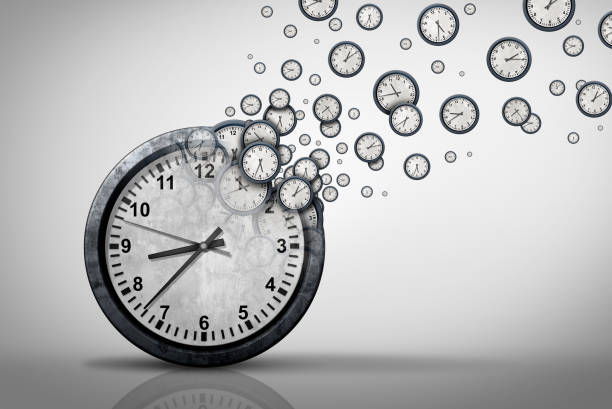To understand the concept of gaining or loosing the time, we have to understand the basic concept of clock. In this article, the concept of clocks and gaining - losing of time is explained.
Lets understand the concept of clock by category of questions asked on clocks. There are three types of questions.
Type 1: Finding the time when the angle between the two hands is given.
Type 2: Finding the angle between the 2 hands at a given time.
Type 3: Questions on clocks gaining/losing time.
We will cover the first two types in this article.
Basic Concept of Clocks:
A clock is a complete circle having 360 degrees. It is divided into 12 equal parts i.e. each part is 360/12 = 30°.
As the minute hand takes a complete round in one hour, it covers 360° in 60 minutes.
In 1 minute it covers 360/60 = 6°/ minute.
Also, as the hour hand covers just one part out of the given 12 parts in one hour. This implies it covers 30° in 60 minutes i.e. ½° per minute.
This implies that the relative speed of the minute hand is 6 - ½ = 5 ½ degrees.
We will use the concept of relative speed and relative distance while solving problems on clocks.
Some facts about clocks:
Every hour, both the hands coincide once. In 12 hours, they will coincide 11 times. It happens due to only one such incident between 12 and 1'o clock.
The hands are in the same straight line when they are coincident or opposite to each other.
When the two hands are at a right angle, they are 15-minute spaces apart. In one hour, they will form two right angles and in 12 hours there are only 22 right angles. It happens due to right angles formed by the minute and hour hand at 3’o clock and 9'o clock.
When the hands are in opposite directions, they are 30-minute spaces apart.
If both the hour hand and minute hand move at their normal speeds, then both the hands meet after 65 minutes.
Now, let's apply the above concept to some questions.
Type 1: Finding the time when the angle between the two hands is given.
Solved Examples
Example 1: At what time between 4 and 5, will the hands of a clock coincide?
Soutionl: At 4 O'clock, the hour hand has covered (4*30°) = 120°.
To catch up with the hour hand, the minute hand has to cover a relative distance of 120°, at a relative speed of 5 ° per minute.
Thus, time required = = = or 21 minutes.
Example 2: At what time between 10 and 11 will the minute and hour hand be at right angles?
Solution: At 10 O'clock, the hour hand has covered (10*30°) = 300°.
Note: There will be two right angles (clockwise and anti-clockwise)
Considering that hour hand is at 10, to make a 90-degree angle with the hour hand, the minute hand has to be at 1 or 7.
For the first right angle, minute hand has to cover a relative distance of (1*30) = 30°.
For the 2nd right angle, minute hand has to cover a relative distance of (7*30)= 210°.
We know that the relative speed between the two hands is of 5 ° per minute.
Hence, time required for the 1st right angle = = or 5 minutes.
Time required for the 2nd right angle = = = 38 minutes.
Type 2 : Finding the angle between the two hands at a given time.
Solved Examples
Example 1: The angle between the minute hand and the hour hand of a clock when the time is 4:20 is:
Solution: At 4:00, hour hand was at 120 degrees.
Using the concept of relative distance, the minute hand will cover = =110 degrees
The angle between the hour hand and minute hand is = 120-110 = 10 degrees.
Example 2: The angle between the minute hand and the hour hand of a clock when the time is 3:30 is:
Solution: At 4:00, hour hand was at 90 degrees.
Using the concept of relative distance, the minute hand will cover = =165 degrees
The angle between the hour hand and minute hand is = 165-90= 75 degrees.
Concept of Losing/Gaining of Time
Let us try understanding this concept with the help of an example.
If a watch indicates 9.20, when the correct time is 9.10, it is said to be 10 minutes too fast. And if it indicates 9.00, when the correct time is 9.10, it is said to be 10 minutes too slow.
Such kind of problems appear in exams very often, when a clock runs faster or slower than the expected pace.
Common Terminologies
Clock is running fast: It is also referred to as gaining time i.e. when a normal clock covers 60 minutes, a faster clock will cover more than 60 minutes.
Clock is running slow: It is also referred to as losing time i.e. when a normal clock covers 60 minutes, a slower clock will cover less than 60 minutes.
Let's try and solve some examples based on the above information.
Example 1: A watch gains 5 minutes in one hour and was set right at 8 AM. What time will it show at 8PM on the same day?
Solution: A correct clock would have completed 12 hours by 8 pm. But the faster clock actually covers 5 min. extra in one hour. So, it will cover 12 x 5 = 60 minutes extra.
Therefore, when the correct clock would show 8 pm, the faster clock will show 60 minutes extra i.e. 9 pm.
Example 2: A watch loses 5 seconds in one hour and was set right at 7am. What time will it show at 2 pm on the same day?
Solution: A correct clock would have completed 7 hours by 2 pm, whereas the slower clock loses 5 seconds per hour i.e. 5 × 7 = 35 seconds in 7 hours.
Therefore, the slower clock shows 1:59:25 pm.
Example 3: A watch loses 5 minutes every hour and was set right at 6am on a Monday. When will it show the correct time again?
Solution: For the watch to show the correct time again, it should lose 12 hours. It loses 5 minutes in 1 hour.
⇒ It loses 1 minute in 12 minutes.
⇒ It will lose 12 hours (or 720 minutes) in 720 × 12 minutes = 8640 minutes

